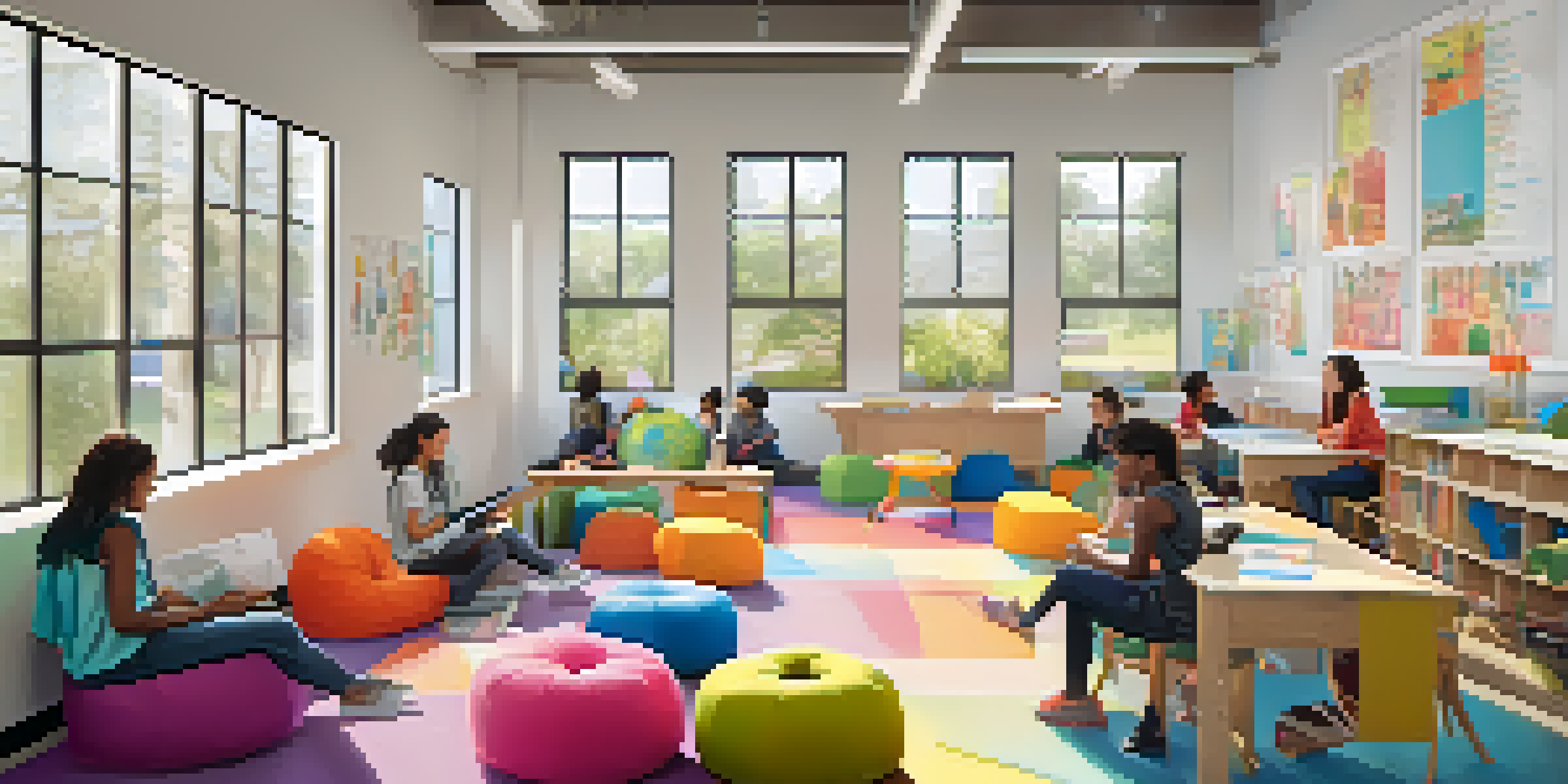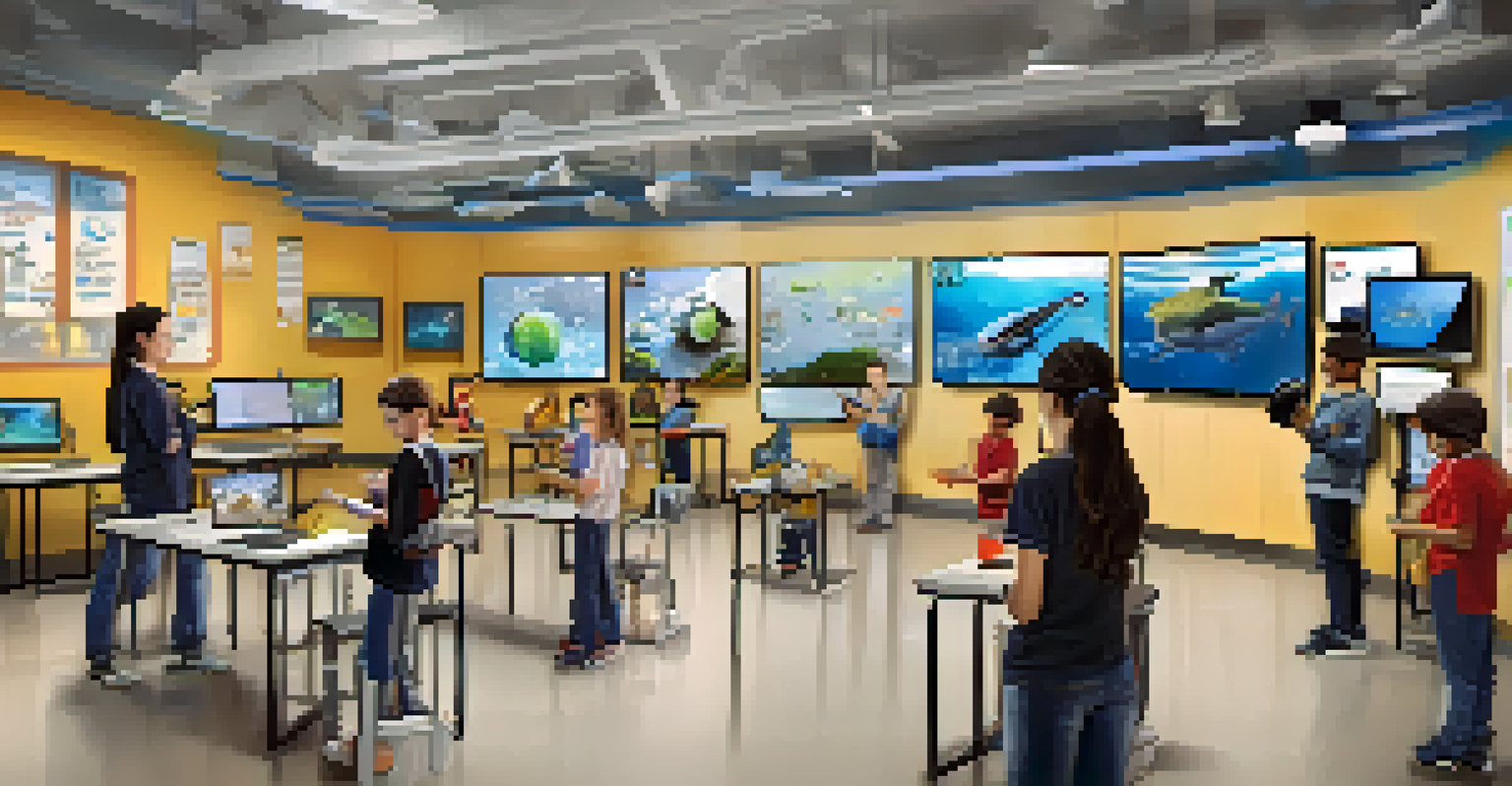Using Brain-Based Strategies to Improve Teaching Methods

Understanding Brain-Based Learning Principles
Brain-based learning focuses on how the brain processes, retains, and retrieves information. This approach is grounded in neuroscience, suggesting that teaching methods should align with how students naturally learn. For instance, incorporating visuals can enhance memory retention, as our brains are wired to respond to images more effectively than text alone.
The brain is a wonderful organ. It starts working the moment you get up and does not stop until you get into the office.
By understanding these principles, educators can design lessons that accommodate various learning styles. This means recognizing that some students thrive in collaborative settings, while others prefer independent study. Tailoring teaching methods to these preferences can lead to a more inclusive and effective learning environment.
Ultimately, the goal is to create a classroom atmosphere that stimulates the brain's natural learning processes. This not only makes learning more enjoyable but also helps students grasp complex concepts more easily. When educators embrace brain-based strategies, they pave the way for deeper understanding and better academic performance.
The Role of Emotion in Learning
Emotions play a crucial role in how we learn and remember information. When students feel safe and engaged, they are more likely to absorb and recall what they've learned. For example, sharing personal stories or anecdotes can create a connection that makes the material more memorable.

Moreover, positive emotions can enhance motivation, pushing students to explore subjects more deeply. Conversely, negative emotions can hinder learning, making it essential for educators to foster a supportive environment. Techniques such as mindfulness practices can help students manage their feelings and improve focus.
Emotions Enhance Learning Retention
When students feel safe and engaged, they are more likely to absorb and recall information.
By integrating emotional intelligence into teaching, educators can help students not only understand the content but also connect with it on a personal level. This connection can lead to greater enthusiasm for learning and a more profound impact on academic success.
Utilizing Active Learning Techniques
Active learning engages students in the learning process, encouraging them to take charge of their education. Techniques such as group discussions, hands-on activities, and problem-solving exercises can make lessons more interactive and enjoyable. For instance, rather than simply lecturing, a teacher might ask students to work in pairs to discuss a topic, fostering collaboration and critical thinking.
Learning is not the product of teaching. Learning is the product of the activity of learners.
This approach not only helps students retain information better but also develops essential skills like communication and teamwork. The brain thrives on novelty and challenge, so incorporating varied activities can keep students motivated and focused. Additionally, active learning can cater to different learning styles, making it accessible for everyone.
Ultimately, the shift from passive to active learning can transform the classroom dynamic. Students become participants in their learning journey, leading to greater ownership of their education and improved outcomes.
The Importance of Feedback in Learning
Feedback is an essential component of the learning process; it helps students understand their strengths and areas for improvement. Constructive feedback can guide learners on how to enhance their skills and knowledge, making it a vital tool for growth. For instance, rather than simply grading a paper, a teacher might provide specific comments that highlight what was done well and what could be improved.
Timely and specific feedback can boost student confidence, encouraging them to take risks and engage more deeply with the material. The brain responds positively to feedback, especially when it's constructive and supportive. By creating a culture of feedback, educators can motivate students to strive for excellence and embrace a growth mindset.
Active Learning Boosts Engagement
Incorporating interactive techniques like group discussions and hands-on activities fosters collaboration and critical thinking.
Furthermore, incorporating self-assessment opportunities allows students to reflect on their progress. This reflection not only fosters independence but also reinforces learning, as students take ownership of their educational journey.
Creating a Brain-Friendly Classroom Environment
A classroom environment that supports brain-based learning is crucial for student success. This includes physical aspects like lighting, seating arrangements, and noise levels, all of which can influence concentration and mood. For example, flexible seating options can allow students to choose their preferred learning spot, enhancing comfort and focus.
Beyond the physical space, a positive classroom culture is essential. Encouraging collaboration, respect, and open communication creates a sense of belonging that can significantly impact learning. When students feel valued and understood, they are more likely to engage fully in the learning process.
Additionally, incorporating elements of choice in lessons can empower students, making them feel more invested in their education. A brain-friendly classroom not only caters to the cognitive needs of students but also addresses their emotional and social well-being.
Incorporating Technology in Brain-Based Learning
Technology can be a powerful ally in enhancing brain-based learning strategies. Tools like interactive simulations, educational games, and virtual reality can make complex concepts more accessible and engaging. For instance, using a virtual lab for science experiments allows students to explore and learn in a safe environment, sparking curiosity and excitement.
Moreover, technology can facilitate personalized learning experiences. Adaptive learning platforms can assess individual progress and tailor content to meet the specific needs of each student. This customization aligns with brain-based principles by ensuring that learning is relevant and appropriately challenging.
Feedback Drives Student Growth
Constructive feedback helps students understand their strengths and areas for improvement, motivating them to strive for excellence.
However, it's essential to strike a balance between technology and traditional teaching methods. While tech can enhance learning, it should complement rather than replace face-to-face interactions and hands-on experiences, ensuring a well-rounded educational approach.
Assessing the Effectiveness of Brain-Based Strategies
To ensure that brain-based strategies are working, educators need to assess their effectiveness regularly. This can involve collecting data on student performance, engagement levels, and feedback from students themselves. For example, surveys or informal discussions can provide insight into what strategies resonate most with learners.
Monitoring progress allows teachers to make informed adjustments to their methods, ensuring that they meet the evolving needs of their students. It also promotes a culture of continuous improvement, where educators feel empowered to experiment with new approaches. By reflecting on their practice, teachers can enhance their effectiveness and ultimately improve student outcomes.

Moreover, sharing success stories and challenges with colleagues fosters collaboration and innovation within the teaching community. By learning from one another, educators can refine their strategies and create a more impactful learning experience for all students.